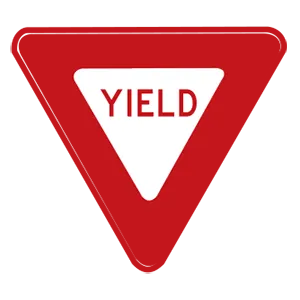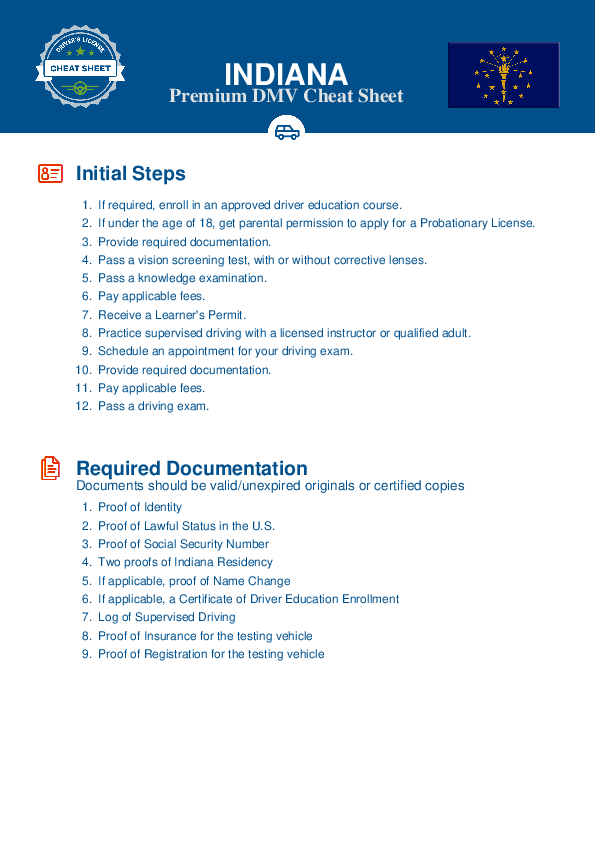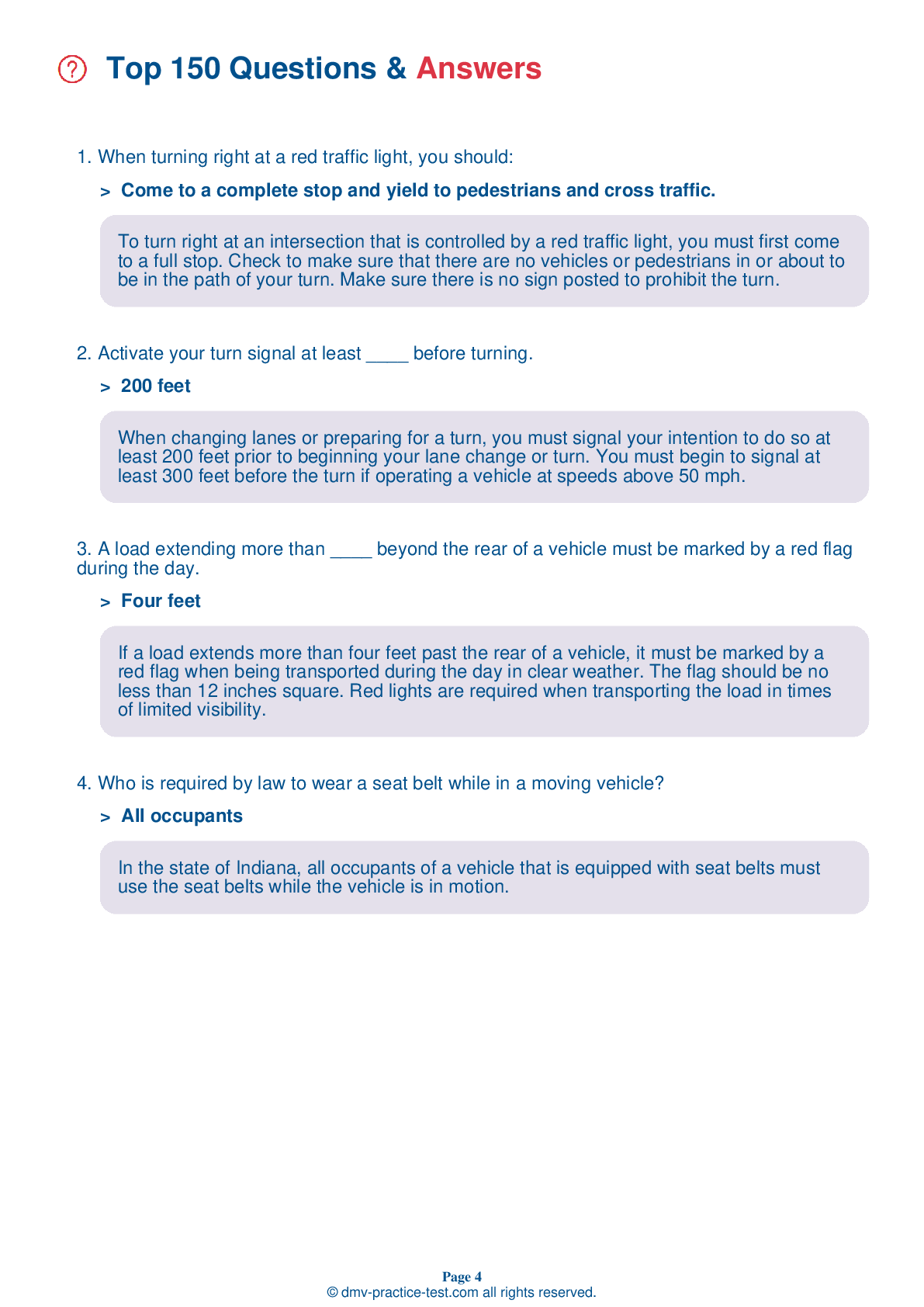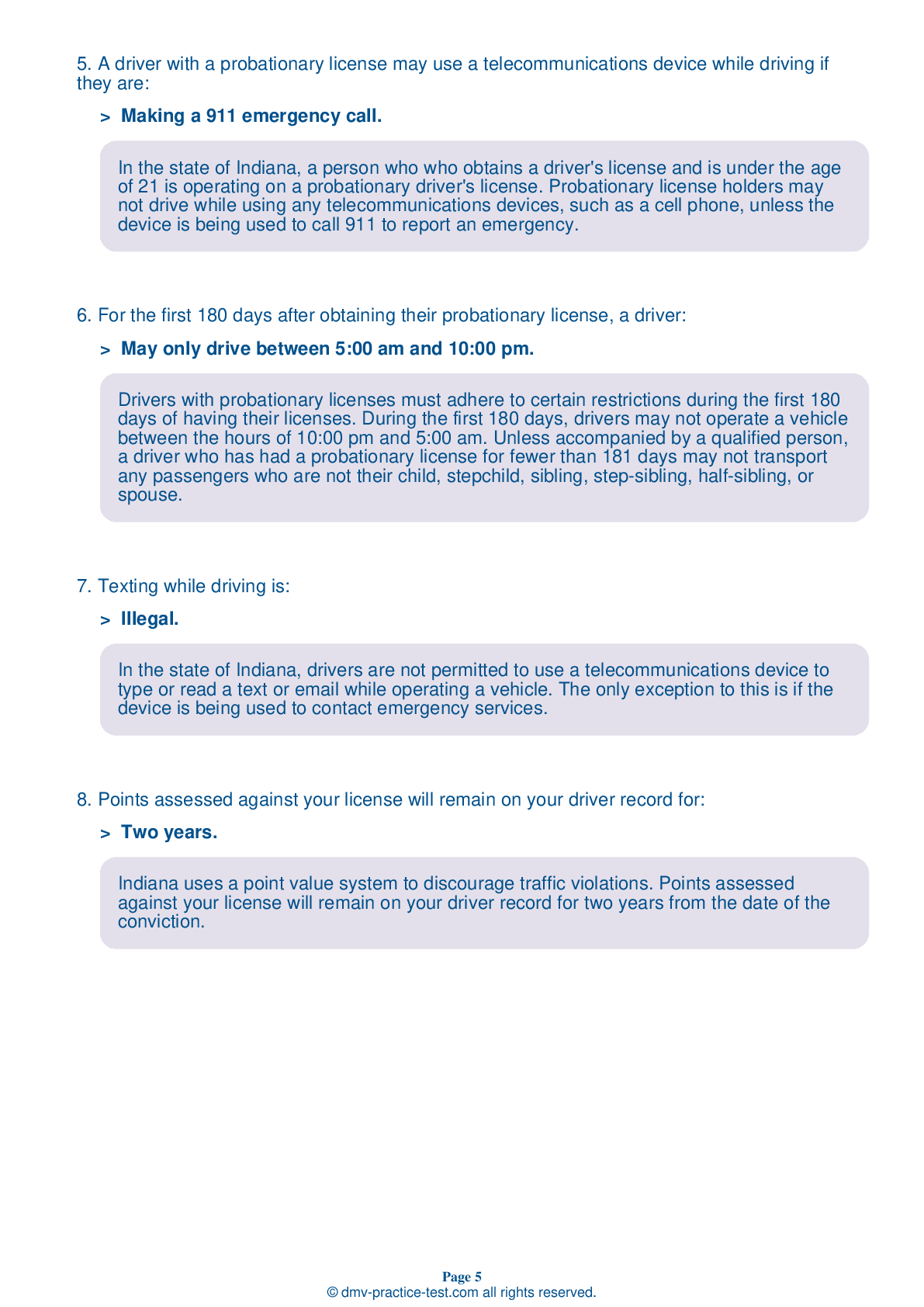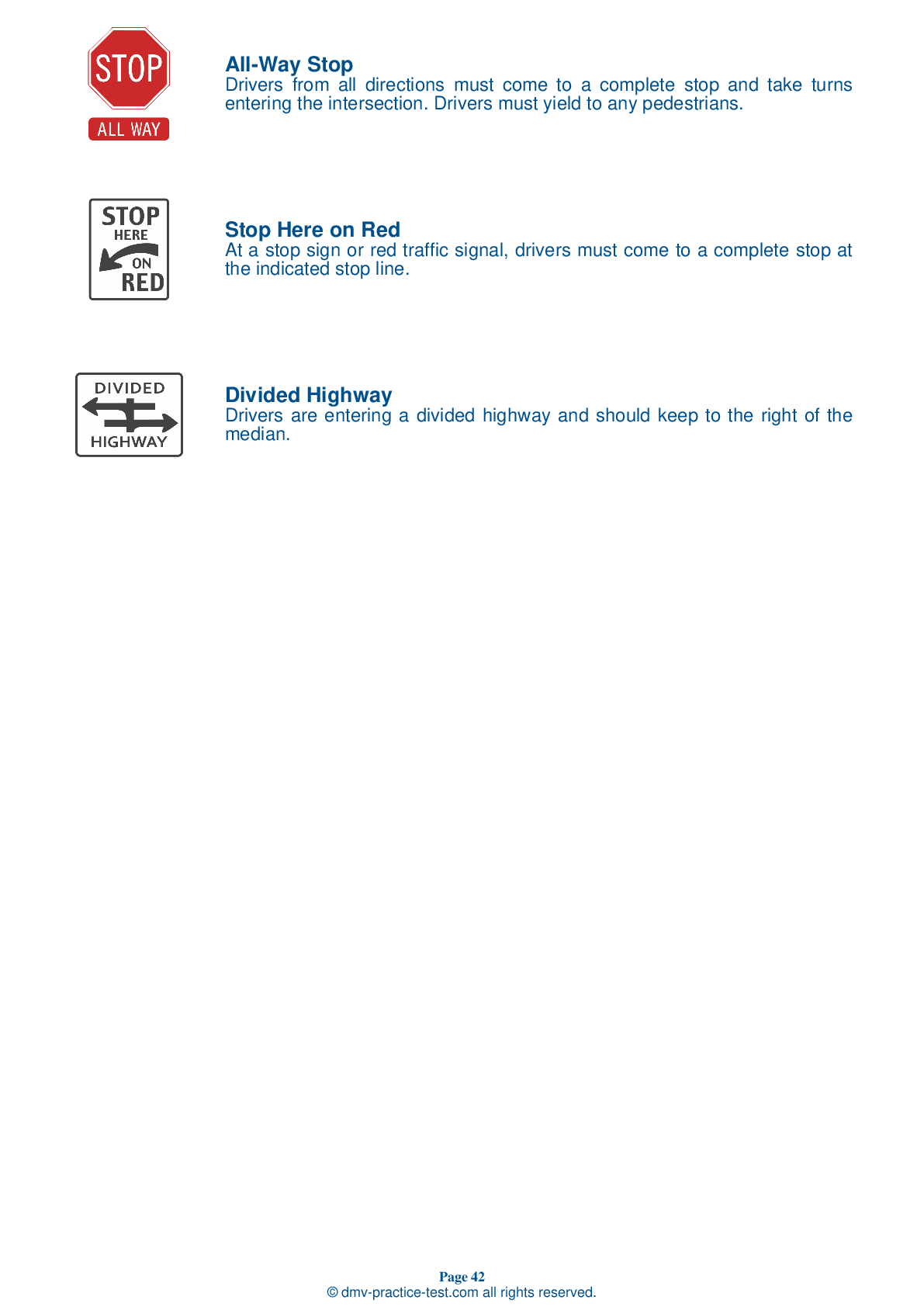FREE Indiana DMV Practice Test #22 Page 5 of 5
This set of Indiana DMV practise tests has been updated for January 2026. It includes questions based on the Indiana Driver Handbook's most significant traffic signals and laws for 2026. Use actual questions that are very similar (often identical!) to the DMV driving permit test and driver's licence exam to study for the DMV driving permit test and driver's licence exam.
On the practise exam, each question gets a tip and explanation to help you remember the concepts. The written component of the official Indiana DMV test will include questions about traffic rules, traffic signs, and driving statutes, as well as information from the Driver Handbook.
To obtain a passing grade, you must correctly answer 44 of the 50 questions. Take our DMV practise exam to help you prepare for your Indiana instruction permit or driver's licence.
The DMV exam is available in several languages.
Using any kind of testing assistance will result in an automatic fail, and the DMV may take additional action against your driver's licence, so stay away from it.
39 . Seat belts are most effective when they are worn by:
When you drive, make sure each person in your vehicle wears a seat belt. In the event of a crash, a person without a seat belt becomes a flying object and a danger to each person in the vehicle.
40 . When approaching a flashing yellow light, drivers should:
A flashing yellow light warns of a hazard. Slow down and proceed with caution.
41 . This sign means:
